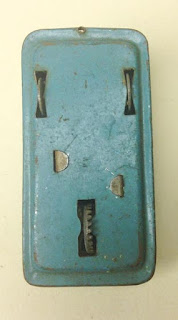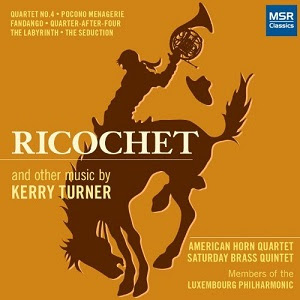Read all the installments of the Straco Express layout project here.
There isn't much I'd consider adding to the layout at this point. But when an unusual vehicle comes along, I can't resist. In this case, the vehicle was a Jeep. And it's a pretty interesting piece.
An early example
Based on the appearance and construction, I'd guess that this Jeep was one of the first toys to be made in post-war Japan.
The chassis is secured by crimping. Crimping was a labor-intensive process. Also, the piece is a little more complex than it needs to be -- which also requires more labor. The windshield was stamped as part of the body and then bent up.
In later versions, the seat would be bent down into the body with an open dash. Here, the seat is a separate assembly, which has to be placed into the body and then secured with tabs.
Immediately after the war, one resource Japan had plenty of was labor. Many women (and men) did piece work for toy manufacturers, assembling components and bending tabs.
More clues underneath
The underside of the Jeep also suggests that this was an early piece. The flywheel for the friction motor doubles as part of the wheelbase. The two front wheels are made of thin metal.
Rubber was in short supply during this period. It was only in the early 1950s that the material was plentiful and cheap enough to be used for wheels.

There's no indication as to who manufactured this piece. I have some examples of Line Mar vehicles with crimped chassis, but the technique is significantly different.
A clue in the payload
This isn't a military Jeep, although it does sport a star. In the back is a shovel, a spade, and some rope -- everything the modern prospector would need. At the time, Jeeps were one of the few ATV vehicles available.
In 1949 there was a
uranium rush in the United States, mostly in the Southwest. The Atomic Energy Commission was paying a premium for uranium and many decided to seek their fortunes in this new gold. Prospectors armed wGeigeriger counters driving military surplus Jeeps were a common image in popular culture.
Circa 1949
Based on those observations, I'm guessing this vehicle was built in 1949, and probably sold in the U.S. in 1949-1950.
The Straco display layout doesn't present many off-road opportunities, so I'm currently placing the Jeep in the station parking lot. There it sits beside the convertable -- two unoccupied vehicles waiting for their owners to return.
Layout construction:
- Pegboard: $4.95
- Flathead Screws: $0.40
- Molding: $2.49
- SilClear: borrowed from a friend
- Green Paint: leftover from another project
- Wood Screws: $3.60
- Felt Pads: $1.99
Power Pack: $5.90
Small Houses: $3.00
Testor's Gray Paint for road: $1.29
Bandai Areo Station: $8.99
Bandai Station: $10.00
2 tinplate signs: $1.00
4 tinplate signs (with train) $5.99
Cragstan HO Light Tower $20.49
4 nesting houses $4.99
Tinplate gas station: $5.00
Vehicles:
- Two Japanese toy cars: $2.00
- A.W. Livestock truck: $4.99
- Taxi: $2.99
- Ambulance: $2.99
- Two Japanese patriotic cars: $6.99
- Haji three-wheel sedan $3.00
- Haji three-wheel tanker $5.00
- 1950's sedan $2.99
- LineMar Police Car $9.00
- LineMar Pepco Truck $8.50
- LineMar Bond Bread Van $8.00
- LineMar Fire Engine $4.95
- LineMar Dump Truck $12.99
- LineMar GE Courier Car $10.98
- LineMar County School Bus $9.99
- Nomura Red Sedan $5.00
- Nomura Police Car $2.52
- Nomura lumber truck $3.48
- 6 Nomura vehicles $16.99
- Shioji Express Truck $10.00
- Shioji Covered Truck $12.50
- Shioji Dump Truck $9.95
- Shioji Shell Tanker $10.50
- Orange Sedan $10.99
- King Sedan $9.95
- Indian Head logo sedan $4.99
- Indian Head (?) convertible $18.00
- Yellow/red Express truck $9.99
- Red limousine FREE
- Jeep $12.00
Total Project Cost: $312.30









































